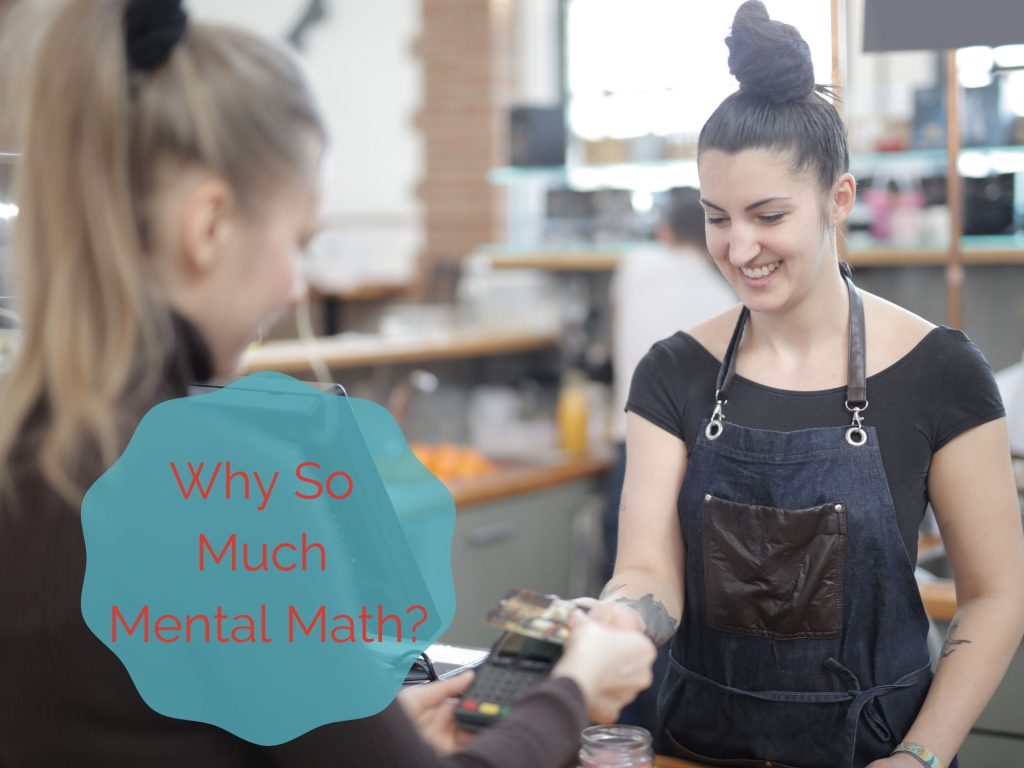Mom Brain moments. They happen all the time. Maybe it’s when you’re at the cashier and trying to figure out if the register is putting in your discounts correctly. Maybe it’s when you’re cooking and your measuring spoon is in the dishwasher and you can’t remember how to convert teaspoons to tablespoons. Or perhaps it’s when your kid asks when an important historical moment happened and you struggle to come up with just how long ago that was.

The older we get, it seems, the more we struggle with math. Unless we are actively doing math-related work, we get out of practice and start to lose the skills we once had. Or maybe we never really developed them at all. I’ve had those moments too, and it’s one of the reasons I appreciate Saxon all the more.
Not everyone does appreciate it, though. I hear from a lot of people who want to know why Saxon requires all that mental math at the beginning of lessons. It’s just busywork, right? After all, we want to get into the REAL learning and check that Math Box off for the day, right?

In short, no. Saxon has some very specific reasons for adding Mental Math into lessons. Here’s what you’ll find in the beginning of Saxon textbooks: “The first part is a Warm-Up that includes practice of basic facts and mental math. These exercises improve your speed, accuracy, and ability to do math “in your head.” The Warm-Up also includes a problem-solving exercise to familiarize you with strategies for solving complicated problems.” (Hake, 6/5 3rd Student Edition)
So why does anyone need speed, accuracy, and ability to do math “in your head.”? Well, let’s remember that a major goal of Saxon Math (and my goal as well) is to help form students who are able to do math well, in the real world. John Saxon himself knew a good deal about this–he had three degrees in engineering and served as a combat pilot in the Korean War. He saw in math textbooks “real world” problems that weren’t about the real world at all. The fact is, the math problems most of us encounter in the real world turn out to require mental math.
Let’s go back to those Mom Brain Moments (and let’s be honest, everyone suffers from these, so we can just call this phenomenon Adult Brain). There is a LOT of mental calculating we have to do just to function in life. When we shop, we need to be able to know how much we are taking from a budget category–in our heads, on the fly. When we drive, we need to be able to calculate speed and distance–in our heads, and fast, on the road. We need to be able to calculate area and perimeter, in our head, often, as we plan home improvements. We need to be able to figure out whether we can get Kid A to point B and Kid C back to point D in a certain amount of time, and determine whether it’s possible given time and distance (pretty sure it’s not, but somehow we make it work, right?). And so much more!
So that’s why the mental math is in the lessons. And that’s why it matters! We all need this ability and it just doesn’t come without practice. LOTS of practice. Think of how much mental math is involved with time management, cooking, baking, sports, physics, chemistry, budgeting, trip planning, coding, history, driving, shopping, music, and so much more.
John Saxon saw so many of his own students struggle with basic math that can be done mentally that when he started writing textbooks, he built those problems into his lessons. He wanted to make sure his students would be able to do basic level math anytime, anywhere. In the end, a little mental math might be good for all of us. It would save us a great deal of time (and maybe some embarrassing moments, too).


